Understanding the Application Process, Income Guidelines, and Next Steps of Homecare
Starting the journey toward Medicaid-funded homecare in New York can feel overwhelming, especially with the many agencies, rules, and steps involved. But breaking down the process helps families move forward with confidence. With the guidance of experienced providers like Individual Home Care, securing these essential services becomes far more manageable. This detailed guide explains how the application process works, how income guidelines are applied, and what happens after approval — all while connecting the dots between the key programs and entities that shape homecare in New York.
The Medicaid Homecare Application Process
Applying for Medicaid homecare services in New York involves a multi-step process that includes medical assessments, financial reviews, and program selection. Understanding each stage — and how agencies like the NY Independent Assessor (NYIA) and Local Department of Social Services (LDSS) contribute — can help you avoid delays and confusion.
Step 1: Gather and Organize Documentation
The first step is preparing comprehensive documentation. This includes proof of identity, income statements (Social Security, pensions, wages), bank records, mortgage or lease papers, utility bills, and medical records that demonstrate the need for homecare. Incomplete or missing documents are one of the most common reasons applications are delayed.
Step 2: Submit Application to LDSS
Once your paperwork is ready, submit your Medicaid application to the Local Department of Social Services in your county. The LDSS reviews financial eligibility, ensuring the applicant’s income and assets fall within the limits set by New York State Medicaid. The LDSS also coordinates with other agencies, including the NYIA, to trigger medical assessments.
Step 3: NYIA Medical Assessment
The NY Independent Assessor plays a crucial role in determining whether an individual qualifies for homecare based on medical necessity. The NYIA sends a nurse to perform a comprehensive functional and clinical assessment, evaluating how much assistance is needed with activities of daily living (ADLs) such as dressing, bathing, mobility, and eating. The NYIA’s findings directly shape the care plan and service authorization.
Step 4: Financial Review and Eligibility Determination
The LDSS examines your income and assets according to Medicaid guidelines. If your income exceeds the threshold, you may still qualify by enrolling in a pooled income trust, where surplus income is deposited to meet eligibility requirements while still funding personal expenses such as rent or utilities. For married applicants, spousal impoverishment protections or spousal refusal strategies can help protect the financial well-being of the non-applicant spouse.
Step 5: Service Plan Development and Provider Selection
Once approved, you’ll select a provider like Individual Home Care to deliver services. Our team collaborates with Medicaid-managed plans, care coordinators, and case managers to ensure a seamless transition into care. The service plan reflects the NYIA’s recommendations and the individual’s specific health and daily living needs.
Understanding Medicaid’s Income and Asset Guidelines
Medicaid’s financial eligibility rules are complex, but knowing the basics helps families prepare:
- Income: Medicaid counts wages, Social Security, pensions, and other recurring income. Monthly income must fall below the limit set by the state, which is adjusted annually. When income exceeds this limit, a pooled trust can be used to maintain eligibility.
- Assets: Countable resources include cash, savings, stocks, and bonds. Exempt assets often include a primary residence (up to an equity cap), one vehicle, household goods, and personal items.
- Spousal protections: Spousal impoverishment laws allow the healthy spouse (community spouse) to retain a portion of income and assets without affecting Medicaid eligibility for the applicant spouse.
At Individual Home Care, we often work alongside elder law attorneys, pooled trust administrators, and financial planners to help families understand and navigate these rules.
What Comes Next After Approval
Getting approved for Medicaid homecare is just the beginning of a coordinated support journey. Families then move through these next steps:
- Care plan implementation: Individual Home Care works with managed long-term care plans (MLTCs) and care managers to ensure services start according to the approved plan. This plan covers personal care aide hours, tasks, frequency of visits, and any specialized services needed.
- Accessing additional support: Many clients are also eligible for programs like the Nursing Home Transition & Diversion (NHTD) waiver or Traumatic Brain Injury (TBI) waiver. These waivers provide added case management, assistive technologies, and home modifications, creating a comprehensive safety net.
- Ongoing assessments: Medicaid requires periodic reassessments through the NYIA to ensure the care plan remains appropriate as the client’s needs evolve. Individual Home Care helps families stay organized for these reviews.
Common Pitfalls — and How to Avoid Them
Navigating Medicaid homecare can be challenging. Common issues include:
- Incomplete applications: Missing documentation or unclear income records can delay processing.
- Misunderstanding income strategies: Many families don’t realize pooled trusts or spousal refusal can help meet financial eligibility.
- Delays in assessments or approvals: Coordination between the LDSS, NYIA, and other entities can slow down the timeline without proactive management.
With Individual Home Care, families benefit from guidance that anticipates these issues and keeps the process moving forward.
The Power of an Integrated Care Network
Medicaid homecare rarely operates in isolation. It often connects with other programs that work together to meet a client’s full range of needs:
- NHTD waiver services support people transitioning out of nursing homes by providing case management, environmental modifications, and community integration assistance.
- TBI waiver services help individuals with brain injuries live independently with the right support.
- OPWDD services offer lifelong support for individuals with developmental disabilities, coordinated alongside homecare services.
Individual Home Care serves as the linchpin, coordinating these services while ensuring day-to-day care is compassionate, consistent, and responsive.
Conclusion
Understanding the Medicaid homecare application process, financial guidelines, and next steps is essential for families planning long-term care in New York. While the system is complex, working with knowledgeable providers like Individual Home Care helps families move forward confidently — ensuring loved ones receive the care they need while preserving financial stability and dignity.
